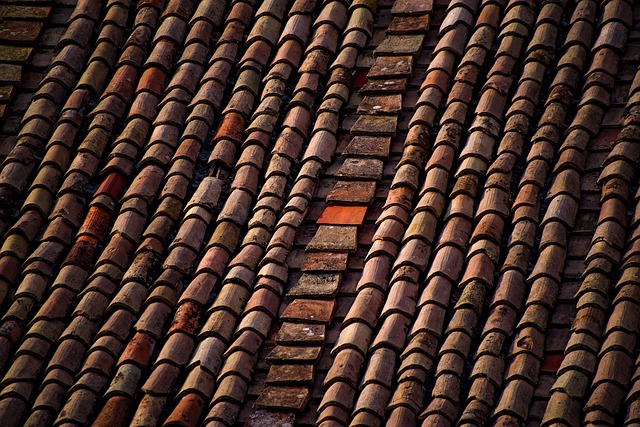Flat roofing systems, featuring diverse materials like TPO, EPDM, and asphalt shingles, offer tailored solutions for various applications based on climate, structure, and maintenance preferences. Professional installation is recommended due to expertise in material selection, navigation of complex spaces, and adherence to safety standards, ensuring durability, insulation, ventilation, and energy efficiency over DIY methods. Using high-quality, industry-standard flat roofing materials suitable for local conditions and proper substrate preparation are critical to avoid leaks, cracks, and heat issues.
“Elevate your property with expert insights into flat roofing systems. This comprehensive guide explores the world of flat roofing, focusing on suitable materials and their diverse applications. We delve into the installation process, revealing a step-by-step expertise that ensures longevity and performance.
From understanding unique flat roofing materials to avoiding common pitfalls, this article is your go-to resource. Discover the benefits of professional installation and learn why it’s a smart choice for any project involving these innovative roofing solutions.”
- Understanding Flat Roofing Systems: Materials and Their Applications
- The Expert Installation Process: Step-by-Step Guide
- Benefits of Professional Flat Roof Installation
- Common Mistakes to Avoid During Flat Roofing Material Setup
Understanding Flat Roofing Systems: Materials and Their Applications
Flat roofing systems have evolved significantly over the years, offering a wide array of materials and designs to suit various needs. Understanding these systems starts with appreciating the diverse range of flat roofing materials available today. From traditional asphalt shingles to modern TPO (thermoplastic olefin) membranes, each material has unique properties and applications. For instance, TPO is known for its superior flexibility, making it ideal for complex roof designs and offering excellent resistance against cracking and tearing. On the other hand, EPDM (ethylene propylene diene monomer) rubber membranes provide exceptional durability and are highly effective at preventing water penetration.
The choice of flat roofing materials also depends on factors like climate, building structure, and maintenance preferences. For example, in regions with extreme weather conditions, materials that offer superior resistance against UV rays, heat, or cold are preferred. Additionally, low-maintenance options are increasingly popular among homeowners and commercial property managers alike, driving the adoption of self-cleaning surfaces and membranes with extended warranties. By understanding these materials and their applications, building owners can make informed decisions when it comes to expert installation of flat roofing systems.
The Expert Installation Process: Step-by-Step Guide
The expert installation of a flat roofing system involves a meticulous, step-by-step process that ensures durability and longevity. It begins with a thorough inspection to assess the roof’s structure and identify any potential issues. Professional installers then prepare the surface by cleaning and ensuring it’s free from debris or existing material remnants. This crucial step is vital for the successful adhesion of new flat roofing materials.
Subsequently, they install underlayment, a protective layer that provides an extra barrier against moisture and adds insulating properties. The installation progresses with the precise placement of flat roof panels or sheets, secured with high-quality fasteners. Gutters and drains are strategically fitted to manage rainwater effectively, preventing water accumulation on the roof. Each stage is executed with meticulous care, ensuring compliance with safety standards and manufacturer guidelines for optimal performance.
Benefits of Professional Flat Roof Installation
When it comes to flat roof installation, turning to professionals is a game-changer. Expert installers bring a wealth of knowledge and experience, ensuring your flat roofing system is not just correctly assembled but also tailored to your specific needs. They understand the unique challenges associated with flat roofs, from navigating labyrinthine spaces to choosing the right flat roofing materials that suit your climate and budget.
Professional installation offers numerous benefits, including enhanced durability and longevity of the roof. Experts use proven techniques and high-quality materials, creating a robust barrier against the elements. This prevents leaks, cracks, and other damage often associated with DIY installations. Moreover, professionals ensure proper insulation and ventilation, which is crucial for energy efficiency and preventing heat-related issues in your home or building.
Common Mistakes to Avoid During Flat Roofing Material Setup
When installing a flat roofing system, even professionals can fall into common traps that lead to costly mistakes. One of the primary issues is using subpar materials, which can compromise the integrity of the roof and its longevity. It’s crucial to select high-quality flat roofing materials that meet industry standards, ensuring they are suitable for the local climate and environmental conditions. Inexperienced installers might skimp on essential components like flashing and sealing agents, leading to leaks over time.
Another blunder is improper preparation of the substrate. Flat roofs require a smooth, level surface free from debris and loose materials. Neglecting this crucial step can result in an uneven application of the roofing membrane, increasing the risk of blisters, tears, and water penetration. Additionally, inadequate ventilation is a frequent oversight; proper ventilation helps regulate temperature extremes and reduces internal pressure, ensuring the roof’s durability.
When it comes to flat roofing systems, expert installation is paramount. By understanding the diverse flat roofing materials and their applications, and following a meticulous step-by-step guide, you can ensure a robust and efficient setup. Professional installation offers numerous benefits, including enhanced durability and water resistance. Avoiding common mistakes, such as improper material selection or poor sealing, is crucial for a long-lasting roof. Investing in expert knowledge guarantees a superior flat roofing system that protects your space for years to come.
